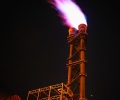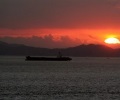Japan says risk of Russian LNG supply disruption at unprecedented level

Japan said June 7 that there was a risk of Russian LNG supply disruption rising to an unprecedented level, strengthening its tone on a potential fuel procurement risk for power generation amid an intensifying competition for fuel as Europe steps up efforts to reduce its dependency on Russian energy.
Japan said there was “a rising risk of not being capable of ensuring stable fuels procurement,” according to documents presented at a ministerial meeting, which took place earlier in the day.
“Our country’s stable energy supply is in unpredictable situations amid a risk of Russian LNG supply disruptions rising to a level like never before,” the documents noted.
Related blog: Global LNG contracting rush leaves Asian importers in tight spot
Russia accounted for 9% of Japan’s total LNG imports of 74.32 million mt as the fifth largest supplier in 2021, according to data from Japan’s Ministry of Finance.
Over half of the 9.6 million mt/year LNG production capacity at the Sakhalin 2 project is committed to Japanese offtakers, and Sakhalin 2 LNG accounts for almost all of Japan’s LNG imports from Russia.
The fuel procurement risk was noted as part of a package of actions approved at the ministerial-level meeting earlier in the day, aiming to ensure the country’s extremely severe summer and winter power supply and demand balance.
All of Japan’s 10 power supply areas are required to have a minimum 3% reserve power supply capacity ratio over demand levels of 10-year highs during the peak demand months.
“While the Tohoku, Tokyo and Chubu areas have just a 3.1% reserve [power supply capacity] ratio this summer, Tokyo to Kyushu areas are not securing a level required to ensure stable supply in this winter, with the Tokyo area having a minus reserve ratio,” Minister of Economy, Trade and Industry Koichi Hagiuda said after the meeting, which took place for the first time in five years.
Driving factors
Hagiuda attributed the severe power supply capacity ratio to a combination of decreasing thermal power plant run rates amid increasing introduction of renewables, coupled with increasing power demand from change in lifestyles.
Amid an expanding introduction of renewable energy on the back of decarbonization in recent years, the run rates at thermal power plants are decreasing and there is an increasing number of mothballing and decommissioning of the power plants [which are] factors behind the trend, Hagiuda said.
This was coupled with some power plants remaining shut due to a major earthquake offshore Fukushima in March and increasing power demand from people tele-working during summer and winter power demand seasons, Hagiuda said.
In response to the fuel procurement risk and an increasing trend of seeing more-than-expected power demand during the peak demand seasons, Japan decided a series of actions, including restarting mothballed power plants, undertaking additional fuel procurements and utilizing renewables and nuclear power, Hagiuda said.
Although Japan does not plan to make a formal electricity saving request with a numerical target this summer, Hagiuda called on the public to cooperate in saving electricity by setting room temperatures of 28 C among other steps.
Source: Platts

 Hellenic Shipping News Worldwide Hellenic Shipping News Worldwide, Online Daily Newspaper on Hellenic and International Shipping
Hellenic Shipping News Worldwide Hellenic Shipping News Worldwide, Online Daily Newspaper on Hellenic and International Shipping





















 PG-Software
PG-Software